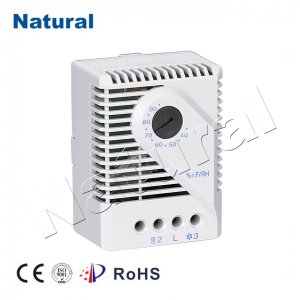Mechanical Temperature Switches: A Versatile Solution for Temperature Control

Temperature control is a critical aspect of various industrial and domestic applications. Whether it’s maintaining the optimal operating conditions of machinery or ensuring comfort in our homes, the ability to control temperature is essential. One reliable and widely used technology for temperature control is the mechanical temperature switch. In this article, we will delve into the functionality and applications of these ingenious devices. Understanding Mechanical Temperature Switches Mechanical temperature switches, also known as bimetallic temperature switches, are devices designed to open or close an electrical circuit based on temperature variations. They operate on the principle of thermal expansion. The core component of these switches is a bimetallic strip, consisting of two metal layers with different coefficients of thermal expansion bonded together. When the temperature changes, one metal layer expands or contracts more than the other, causing the strip to bend. This bending action is harnessed to actuate a switch mechanism. When the temperature reaches a predefined setpoint, the switch opens or closes, allowing or interrupting the flow of electrical current. This simple yet effective mechanism makes mechanical temperature switches ideal for various applications where temperature control is crucial. Applications in Industrial Settings Heating and Cooling Systems: Mechanical temperature switches are commonly used in HVAC (heating, ventilation, and air conditioning) systems to control heating elements, fans, and compressors. They help maintain the desired temperature within a building, ensuring comfort and energy efficiency. Refrigeration: In refrigeration systems, these switches are employed to monitor and control the temperature of refrigerated compartments. When the temperature rises above a certain level, the switch can activate the compressor to lower the temperature. Manufacturing Processes: Many manufacturing processes require precise temperature control. Mechanical temperature switches are used in various industries to ensure that equipment operates within specified temperature ranges, preventing overheating or underheating. Safety Systems: Mechanical temperature switches also find applications in safety systems. For example, they can be used to trigger alarms or shutdowns in the event of overheating, protecting equipment and personnel from potential hazards. Advantages of Mechanical Temperature Switches Mechanical temperature switches offer several advantages: Reliability: These switches have a long track record of reliable performance. They are less prone to electronic malfunctions and can withstand harsh operating conditions. Cost-Effective: Mechanical temperature switches are often more cost-effective than their electronic counterparts, making them a preferred choice for budget-conscious applications. Ease of Installation: They are relatively easy to install and require minimal maintenance. Wide Temperature Range: Mechanical temperature switches are available in a wide temperature range, making them suitable for a broad spectrum of applications. Safety: Their inherent simplicity enhances safety, as there are fewer components that can fail. Conclusion In conclusion, mechanical temperature switches are versatile devices that play a pivotal role in temperature control across various industries and applications. Their reliability, cost-effectiveness, and ease of installation make them a preferred choice for many temperature control scenarios. Whether it’s ensuring the comfort of our homes or maintaining the efficiency of industrial processes, these ingenious devices continue to be indispensable in our daily lives.